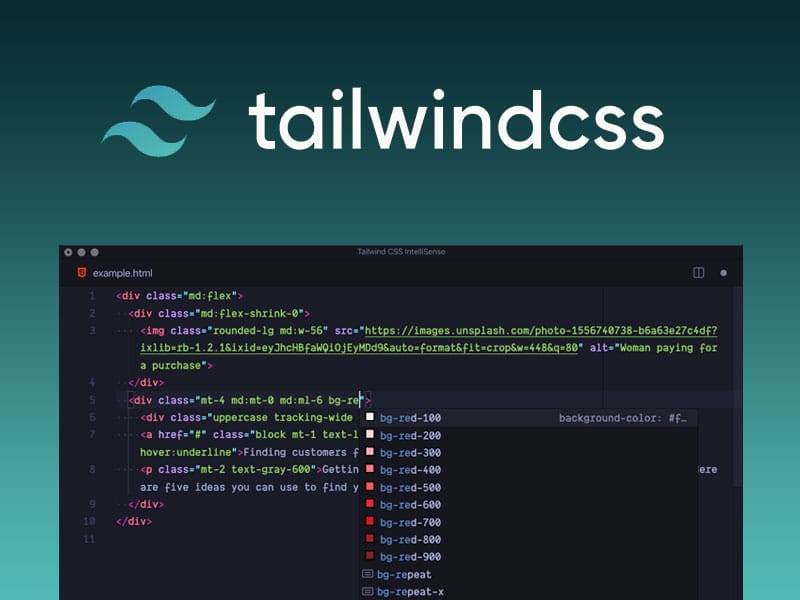Tailwind CSS: The Utility-First Framework Dominating Frontend Development in 2025
In mid‑2025, Tailwind CSS continues to reign supreme as the go‑to CSS framework for modern UI development. Its utility‑first architecture, ultra‑efficient styling, and adaptability for WordPress, jQuery, and component‑based stacks make it a standout choice for developers at all levels — from beginners to enterprise-level teams.
Table of Contents
Why Tailwind CSS Dominates the UI Landscape
✅ Utility‑First Philosophy
Rather than relying on prebuilt components, Tailwind gives developers atomic utility classes like bg-yellow-300 or font-bold to compose any design directly within the markup. This approach eliminates the need for repetitive custom CSS, encourages consistent design systems, and speeds up iteration cycles.
✅ Exceptional Customization & Performance
Tailwind is highly configurable via the tailwind.config.js file. Developers can define color palettes, spacing scales, breakpoints, and more to align with brand requirements. With its powerful Just‑In‑Time (JIT) engine, Tailwind generates only the CSS actually used in your HTML, dramatically reducing file size and improving load times — a key factor for Core Web Vitals and SEO.
✅ Framework‑Agnostic Integration
One of the biggest strengths of Tailwind CSS is its flexibility. Whether you’re working with React, Vue.js, Angular, or even static HTML and WordPress, Tailwind fits seamlessly into any stack. Even jQuery-based legacy projects can benefit from Tailwind’s clean utility classes, making UI upgrades easier without rewriting entire templates.
How It Compares to Other Frameworks
🔄 Versus Bootstrap and Materialize
Bootstrap and Materialize offer pre-designed components, but they can feel heavy and opinionated. Developers often spend time overriding default styles. Tailwind, by contrast, lets you design freely from scratch while keeping your CSS output minimal and custom. It supports better performance, more maintainable code, and unique UI builds that don’t look like a template.
🔄 Versus jQuery UI or Legacy Stacks
While jQuery UI still functions, it’s no longer the preferred choice for modern interfaces. Native JavaScript has caught up, and CSS frameworks like Tailwind offer far more flexibility with less overhead. Still, many legacy systems using jQuery can refresh their UI by layering Tailwind over existing templates — breathing new life into old interfaces.
🔄 Versus React UI Libraries (e.g., MUI, Chakra UI)
Popular component libraries like MUI and Chakra offer abstractions and theming, but Tailwind often complements these tools rather than replacing them. Many developers now pair Tailwind with component-based frameworks to get the best of both worlds — utility-first styling with structured components.
Real‑World Use Cases in 2025
- WordPress Development
More theme and plugin developers now use Tailwind when building custom Gutenberg blocks or headless themes. The reduction in custom styles and the ability to build responsive layouts on the fly make it ideal for dynamic WordPress environments. - jQuery‑Enhanced Sites
While jQuery usage is in decline, thousands of websites still depend on it. Tailwind can be added to existing projects to modernize the UI without removing jQuery — useful for gradual refactoring. - Svelte, Vue, and React Projects
Tailwind integrates seamlessly into component files using class attributes. Developers can style directly within JSX or Svelte components without leaving the markup. This speeds up development and improves maintainability.
Pro Tips for SEO‑Friendly UI Projects Using Tailwind CSS
- Use semantic HTML tags and meaningful class names where possible (e.g.,
<p class="prose">for readable text). - Enable PurgeCSS or use Tailwind’s JIT mode to remove unused styles and reduce file size.
- Keep a consistent design system using the configuration file to manage spacing, fonts, and colors.
- Use descriptive long-tail keywords in meta tags and documentation like “Tailwind WordPress theme styling” or “Tailwind jQuery UI integration.”
- Optimize for performance and accessibility, as Tailwind encourages clean, accessible, mobile-first design.
Why Tailwind CSS Adds Value Beyond Competitors
Tailwind CSS isn’t just a trend — it’s a long-term design solution that scales across platforms, projects, and teams. It:
- Bridges the gap between raw CSS and UI libraries.
- Supports performance-first design by reducing render-blocking styles.
- Encourages semantic, maintainable markup with highly readable class-based styling.
- Enhances workflow efficiency by eliminating context-switching between HTML and CSS files.
Whether you’re launching a new WordPress project, revamping a jQuery-based dashboard, or building the next SaaS app with Vue or React, Tailwind CSS offers the flexibility, performance, and control modern developers demand in 2025.
Follow us on Twitter







